Hi-Tech Medical Devices Market Size
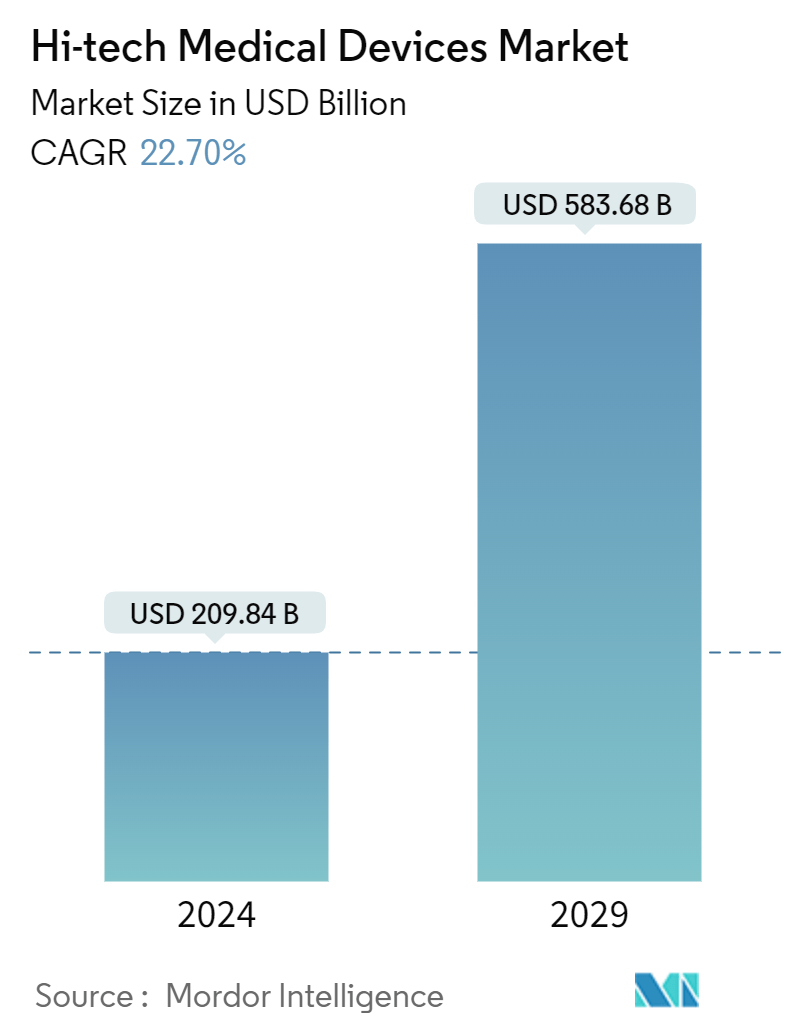
| Study Period | 2019 - 2029 |
| Market Size (2024) | USD 209.84 Billion |
| Market Size (2029) | USD 583.68 Billion |
| CAGR (2024 - 2029) | 22.70 % |
| Fastest Growing Market | North America |
| Largest Market | Asia Pacific |
Major Players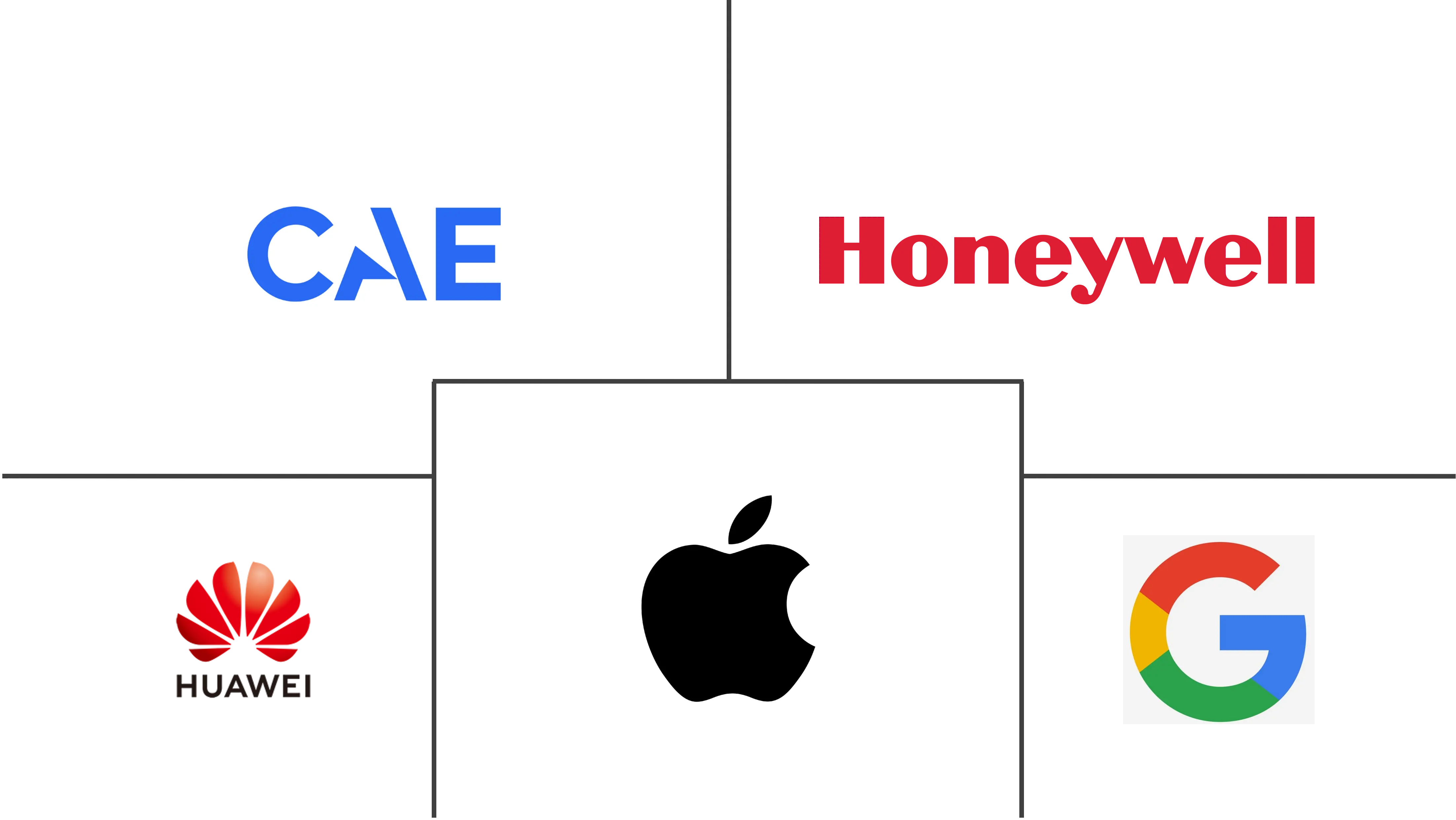
*Disclaimer: Major Players sorted in no particular order |
Hi-Tech Medical Devices Market Analysis
The Hi-tech Medical Devices Market size is estimated at USD 209.84 billion in 2024, and is expected to reach USD 583.68 billion by 2029, growing at a CAGR of 22.70% during the forecast period (2024-2029).
The hi-tech medical devices market is expected to grow during the forecast period owing to the rising awareness of personal health and fitness, the growing penetration of the internet and smartphones, and the rising prevalence of cardiovascular diseases and obesity. For example, findings from the June 2023 Health Information National Trends Survey (HINTS), with a sample size of 9,303 respondents, indicate that 33% of American adults use wearable devices, such as smartwatches or bands, for health and fitness tracking. Moreover, over 80% of users were willing to share their device data with their physicians, aiming to bolster their health monitoring. Similarly, as per an article published by the fitness journal Sensors in April 2022, the usage of wearable activity tracker devices has increased exponentially in recent times. The same article reported that self-determination, self-awareness, motivation, tracking progress, and staying informed are the driving forces behind the growing usage of wearable activity trackers. Therefore, awareness among people about tracking vital parameters such as timing and intensity of physical activity, distance covered, calories burned, sleep assessment, and heart rate is expected to boost market growth during the forecast period.
Moreover, as market players increasingly introduce technologically advanced products with enhanced functionalities, the market is poised for further growth. For instance, in February 2024, Xiaomi introduced its latest fitness tracker, the Xiaomi Smart Band 8 Pro, in the European market. This advanced model boasts a SpO2 sensor, heart-rate monitoring, menstrual cycle monitoring, sleep tracking, and stress level tracking. Similarly, in January 2023, Senet, a cloud-based software and services platform, and Telli Health, engaged in medical remote patient monitoring devices, launched one of the first remote patient monitoring (RPM) hardware powered by LoRaWAN. This technology is aimed to allow providers to reach more patients in remote and underserved areas and create the foundation to provide more smart home services in the upcoming year. Such launches are expected to increase the availability of the devices in the market, which, in turn, will boost the market growth during the forecast period.
Therefore, the market is expected to grow during the forecast period due to factors such as the rising adoption of personal health and fitness practices and product launches by market players. However, the high cost of devices and data privacy complications are expected to restrain the market growth.
Hi-Tech Medical Devices Market Trends
Fitness Bands are Expected to Witness Significant Growth During the Forecast Period
Fitness bands, also known as fitness trackers or activity trackers, are wearable devices designed to monitor and track various aspects of physical activity, health, and fitness. The fitness band segment is expected to grow during the forecast period owing to market players' rising adoption of fitness trackers and launches.
In 2024, the NCD Risk Factor Collaboration (NCD-RisC) released findings estimating that approximately 880 million adults and 159 million children and adolescents aged 5-19, collectively exceeding one billion individuals worldwide, are grappling with obesity. Owing to such a rising obese population and concerns about obesity-related risks, there has been a significant rise in the adoption of various forms of physical activity. Additionally, using fitness bands is associated with a considerable increase in the user's physical activity. For instance, according to a January 2023 study published in the Journal of Medical Internet Research, activity adequacy mindsets (AAMs), whether prompted by trackers or consciously adopted, can significantly impact behavior and health. This influence remains potent even when decoupled from the actual physical activity levels. In essence, wearable fitness trackers can mold perceptions regarding the sufficiency and health outcomes of one's physical activities. Similarly, according to another study published in the International Journal of Environmental Research and Public Health in November 2022, a four-month interventional study conducted in Slovenia between June 2021 and February 2022 stated that fitness bands or trackers were observed to be effective in promoting physical activity in older adults. Such research studies show that positive outcomes boost the adoption of fitness bands among the population, which is projected to expedite the segment's growth.
The rising partnerships, launches, and technological advancements by market players are expected to propel the segment’s growth during the forecast period. For instance, in February 2024, Samsung introduced the Galaxy Fit 3, its latest fitness tracker, to the Indian market. The aim was to enable advanced health-monitoring technology to be more accessible in the affordable wearable segment and enhance workout and wellness data visibility through the larger screen of the new product. In June 2022, Xiaomi launched its global Xiaomi Band 7 fitness tracking device. This tracker is water-resistant and features over 100 sports modes. Therefore, the rising launches and technological advancements in fitness bands are expected to propel the segments’ growth during the forecast period.
Therefore, owing to the advantages of fitness trackers and the rising launch by market players, the segment is expected to grow during the forecast period.
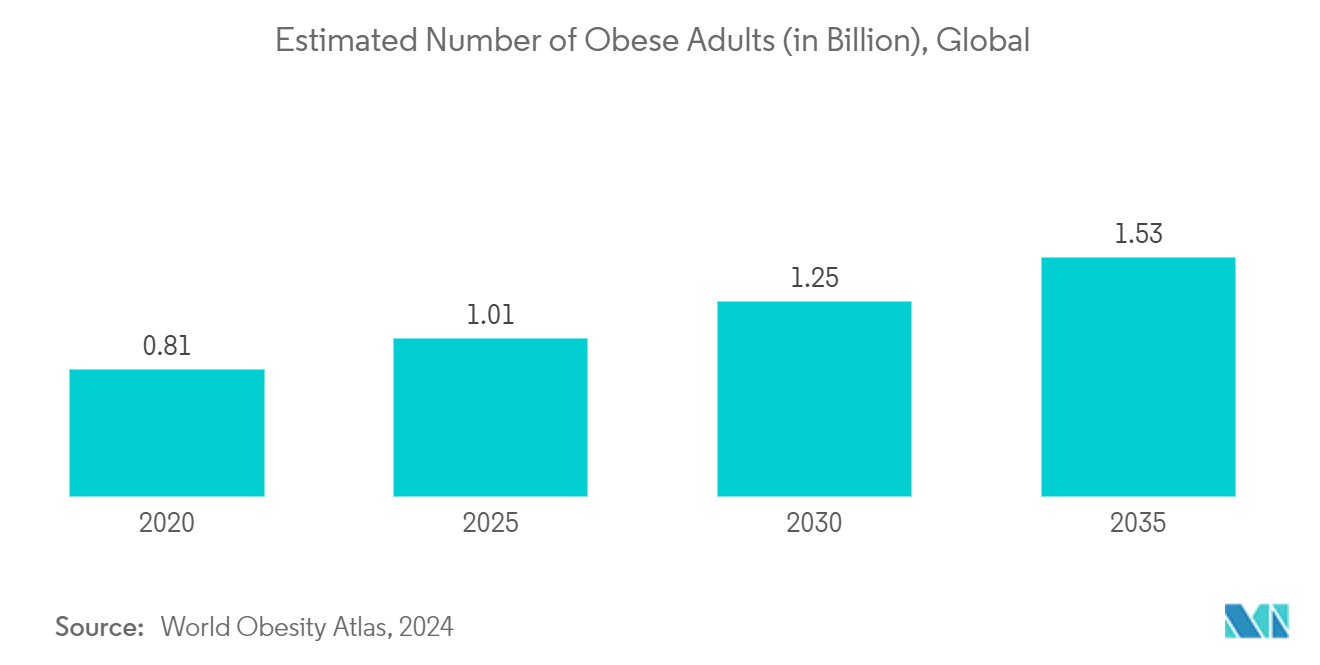
North America is Expected to Hold a Significant Market Share During the Forecast Period
North America is expected to hold a significant market share owing to factors such as the rising incidence of cardiovascular diseases and obesity, the high adoption of fitness trackers, product launches, and the high concentration of market players.
The region’s high adoption of smartphones and hi-tech devices for personal health and well-being is a crucial driver for the market’s growth. For instance, according to a research study published in NPJ Digital Medicine in April 2022, 21% of Americans use smartwatches or wearable fitness trackers. Owing to such technology adoption trends and higher utilization of wearable fitness trackers, the market is anticipated to grow quickly during the forecast period.
Also, the large number of obesity cases in the region is expected to propel the utilization of hi-tech medical devices during the forecast period. Obesity is a significant health concern, and individuals are increasingly seeking effective ways to manage their weight. For instance, according to the Trust for America’s Health’s (TFAH) report published in October 2023, 22 states have adult obesity rates above 35%, up from 19 states in 2022 and 16 states in 2021. Wearable fitness technology, such as fitness trackers and smartwatches, plays a crucial role in this context. These devices allow users to track their physical activity levels, monitor calorie expenditure, and set fitness goals. By providing real-time data and encouraging active lifestyles, wearables contribute to weight loss and overall well-being. Hence, the substantial prevalence of obesity is projected to enhance weight-loss efforts. This is because wearable fitness technology continuously monitors daily physical activity, driving market growth during the forecast period.
In addition, the launches of advanced hi-tech medical devices and partnerships between market players are expected to propel the market growth. For instance, in October 2023, Google-owned Fitbit unveiled its latest fitness tracker, the Charge 6, in the United States and Canada, opening it up for pre-orders. The company also bundled a complimentary six-month Fitbit Premium membership with the Charge 6, granting users access to detailed metrics, including the coveted Daily Readiness Score. Similarly, in November 2022, Planet Fitness collaborated with Amazon Halo to provide people with the tools and resources to achieve their fitness goals inside the gym and beyond. It offered a PF Black Card, a complimentary Amazon Halo View wellness tracker, and one year of full access to an Amazon Halo membership for new Planet Fitness members in North America. Considering the high rate of technology adoption in the region, such initiatives and enhanced benefits are expected to promote the adoption of hi-tech devices further, accelerating market growth.
Therefore, owing to the above-mentioned factors, such as the high burden of obesity, the rising adoption of fitness trackers, and product launches by market players, the market's growth is anticipated in North America.
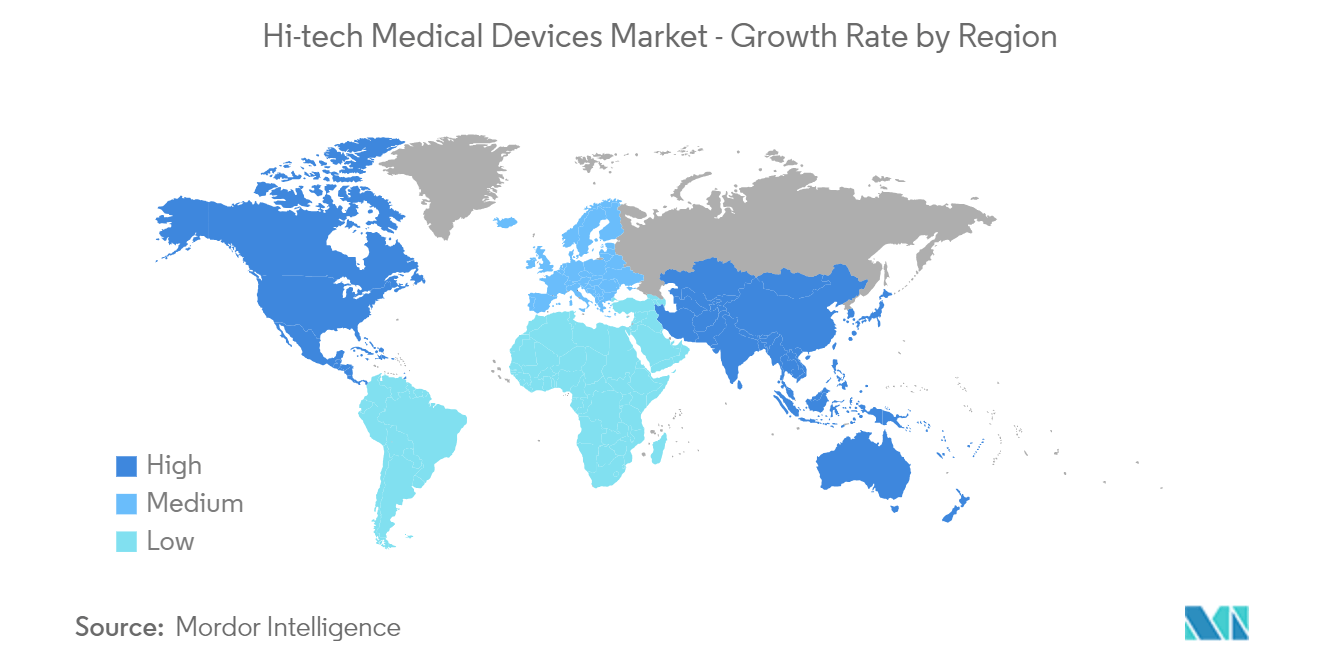
Hi-Tech Medical Devices Industry Overview
The hi-tech medical devices market is fragmented in nature due to the presence of several market players operating globally and regionally. The market players are engaged in strategic initiatives such as launches, partnerships, collaborations, mergers, and acquisitions to strengthen their market position. Some key market players are Apple Inc., Google Inc., Honeywell International Inc., CAE Healthcare, and Huawei Technologies Co. Ltd.
Hi-Tech Medical Devices Market Leaders
-
Apple Inc.
-
Google Inc
-
Honeywell International Inc.
-
CAE Healthcare
-
Huawei Technologies Co., Ltd.
*Disclaimer: Major Players sorted in no particular order
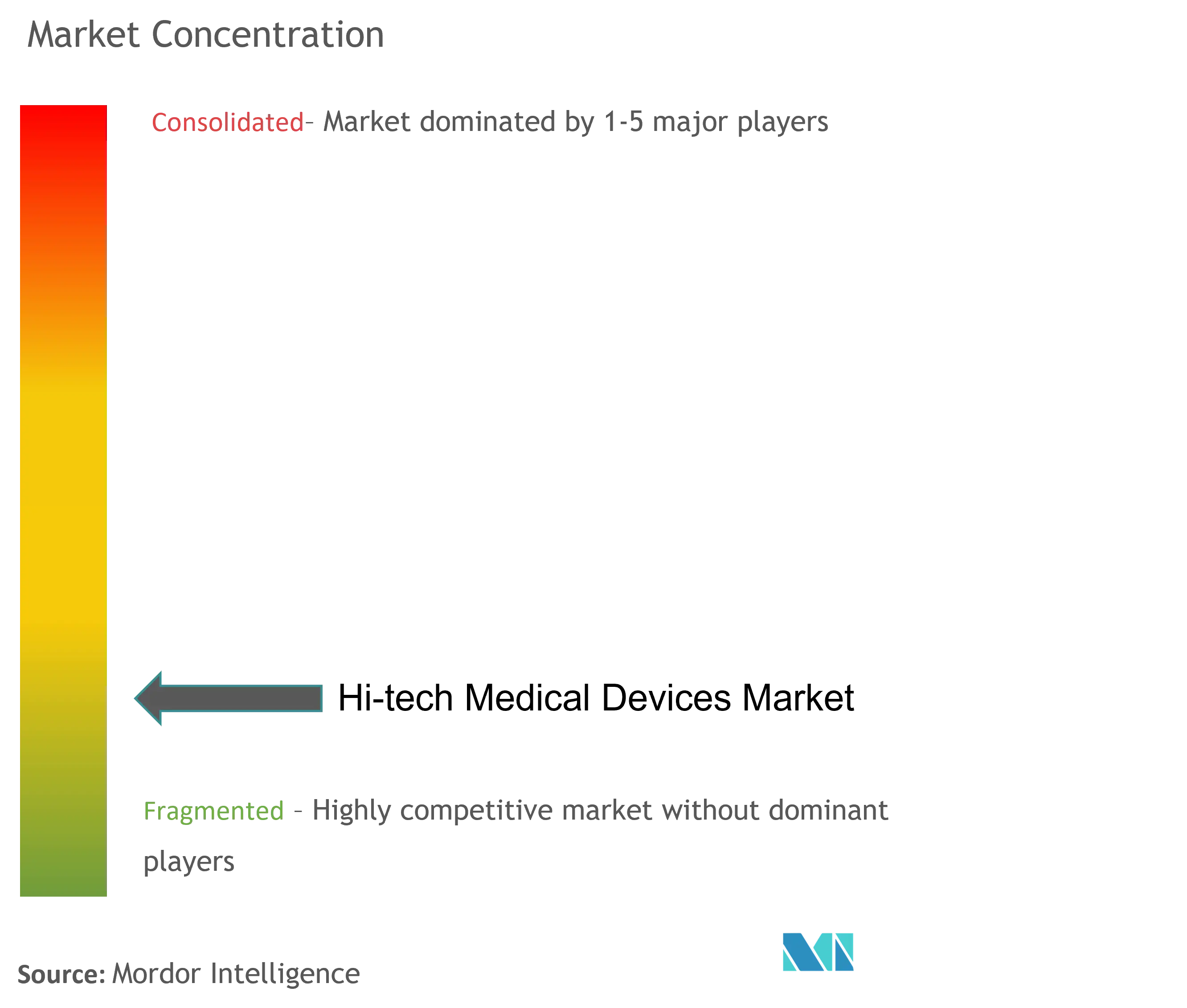
Hi-Tech Medical Devices Market News
- February 2024: London-based Medtech startup Samphire Neuroscience raised USD 2.25 million in pre-seed funding. The capital injection is earmarked for the launch of 'Nettle,' its cutting-edge medical-grade neurostimulation wearable. Nettle operates by administering a gentle electrical current, a transcranial direct current stimulation (tDCS) technique, to regulate neuronal activity.
- April 2023: Honeywell created a real-time health monitoring system that can capture and record patients' vital signs both within the hospital setting and remotely. The Honeywell solution monitors vital signs through a skin patch using cutting-edge sensor technology, transmitting the information instantly to medical professionals using mobile devices and an online dashboard.
- January 2023: Titan launched a range of premium and innovative smart wearables named Titan Talk S. The device has a built-in mood and stress monitor and offers to monitor breathing rate, SpO2, blood pressure, sleep, and women's health.
Hi-Tech Medical Devices Market Report - Table of Contents
1. INTRODUCTION
- 1.1 Study Assumptions and Market Definition
- 1.2 Scope of the Study
2. RESEARCH METHODOLOGY
3. EXECUTIVE SUMMARY
4. MARKET DYNAMICS
- 4.1 Market Overview
-
4.2 Market Drivers
- 4.2.1 Rising Burden of Cardiovascular Diseases and Obesity
- 4.2.2 Rising Awareness on Personal Health and Fitness
- 4.2.3 Growing Penetration of Internet and Smartphones
-
4.3 Market Restraints
- 4.3.1 High Cost of Devices and Data Privacy Complications
-
4.4 Porter's Five Forces Analysis
- 4.4.1 Threat of New Entrants
- 4.4.2 Bargaining Power of Buyers/Consumers
- 4.4.3 Bargaining Power of Suppliers
- 4.4.4 Threat of Substitute Products
- 4.4.5 Intensity of Competitive Rivalry
5. MARKET SEGMENTATION (Market Size by Value - USD million)
-
5.1 By Product
- 5.1.1 Virtual Reality Sets
- 5.1.2 Fitness Bands
- 5.1.3 Smart Watches
- 5.1.4 Smart Phones
- 5.1.5 Other Products
-
5.2 By Application
- 5.2.1 Sports and Fitness
- 5.2.2 Remote Patient Monitoring
- 5.2.3 Home Healthcare
- 5.2.4 Other Applications
-
5.3 Geography
- 5.3.1 North America
- 5.3.1.1 United States
- 5.3.1.2 Canada
- 5.3.1.3 Mexico
- 5.3.2 Europe
- 5.3.2.1 Germany
- 5.3.2.2 United Kingdom
- 5.3.2.3 France
- 5.3.2.4 Italy
- 5.3.2.5 Spain
- 5.3.2.6 Rest of Europe
- 5.3.3 Asia-Pacific
- 5.3.3.1 China
- 5.3.3.2 Japan
- 5.3.3.3 India
- 5.3.3.4 Australia
- 5.3.3.5 South Korea
- 5.3.3.6 Rest of Asia-Pacific
- 5.3.4 Middle East and Africa
- 5.3.4.1 GCC
- 5.3.4.2 South Africa
- 5.3.4.3 Rest of Middle East and Africa
- 5.3.5 South America
- 5.3.5.1 Brazil
- 5.3.5.2 Argentina
- 5.3.5.3 Rest of South America
6. COMPETITIVE LANDSCAPE
-
6.1 Company Profiles
- 6.1.1 Apple Inc.
- 6.1.2 Google Inc.
- 6.1.3 Adidas AG
- 6.1.4 Virtual Realities Limited
- 6.1.5 CAE Healthcare
- 6.1.6 Huawei Technologies Co. Ltd
- 6.1.7 Honeywell International Inc.
- 6.1.8 Medtronic PLC
- 6.1.9 Xiaomi Corporation
- 6.1.10 BBK Electronics
- *List Not Exhaustive
7. MARKET OPPORTUNITIES AND FUTURE TRENDS
** Subject To AvailablityHi-Tech Medical Devices Industry Segmentation
As per the scope of the report, high-tech medical devices refer to electronic, electromechanical, or computer-based high-technology equipment used in the screening, monitoring, observation, diagnosis, and treatment of patients. The hi-tech medical devices market is segmented by product (virtual reality sets, fitness bands, smart watches, smartphones, and other products), sales channel (offline and online), wearing type (hand wear, leg wear, headwear, and other types), application (sports and fitness, remote patient monitoring, home healthcare, and other applications), and geography (North America, Europe, Asia-Pacific, Middle East and Africa, and South America). The report also covers the estimated market sizes and trends for 17 countries across major regions globally. The report offers the value (in USD million) for the above segments.
| By Product | Virtual Reality Sets | |
| Fitness Bands | ||
| Smart Watches | ||
| Smart Phones | ||
| Other Products | ||
| By Application | Sports and Fitness | |
| Remote Patient Monitoring | ||
| Home Healthcare | ||
| Other Applications | ||
| Geography | North America | United States |
| Canada | ||
| Mexico | ||
| Geography | Europe | Germany |
| United Kingdom | ||
| France | ||
| Italy | ||
| Spain | ||
| Rest of Europe | ||
| Geography | Asia-Pacific | China |
| Japan | ||
| India | ||
| Australia | ||
| South Korea | ||
| Rest of Asia-Pacific | ||
| Geography | Middle East and Africa | GCC |
| South Africa | ||
| Rest of Middle East and Africa | ||
| Geography | South America | Brazil |
| Argentina | ||
| Rest of South America |
Hi-Tech Medical Devices Market Research FAQs
How big is the Hi-Tech Medical Devices Market?
The Hi-Tech Medical Devices Market size is expected to reach USD 209.84 billion in 2024 and grow at a CAGR of 22.70% to reach USD 583.68 billion by 2029.
What is the current Hi-Tech Medical Devices Market size?
In 2024, the Hi-Tech Medical Devices Market size is expected to reach USD 209.84 billion.
Who are the key players in Hi-Tech Medical Devices Market?
Apple Inc., Google Inc, Honeywell International Inc., CAE Healthcare and Huawei Technologies Co., Ltd. are the major companies operating in the Hi-Tech Medical Devices Market.
Which is the fastest growing region in Hi-Tech Medical Devices Market?
North America is estimated to grow at the highest CAGR over the forecast period (2024-2029).
Which region has the biggest share in Hi-Tech Medical Devices Market?
In 2024, the Asia Pacific accounts for the largest market share in Hi-Tech Medical Devices Market.
What years does this Hi-Tech Medical Devices Market cover, and what was the market size in 2023?
In 2023, the Hi-Tech Medical Devices Market size was estimated at USD 162.21 billion. The report covers the Hi-Tech Medical Devices Market historical market size for years: 2019, 2020, 2021, 2022 and 2023. The report also forecasts the Hi-Tech Medical Devices Market size for years: 2024, 2025, 2026, 2027, 2028 and 2029.
Hi-Tech Medical Devices Industry Report
Statistics for the 2024 Hi-Tech Medical Devices market share, size and revenue growth rate, created by Mordor Intelligence™ Industry Reports. Hi-Tech Medical Devices analysis includes a market forecast outlook for 2024 to 2029 and historical overview. Get a sample of this industry analysis as a free report PDF download.



